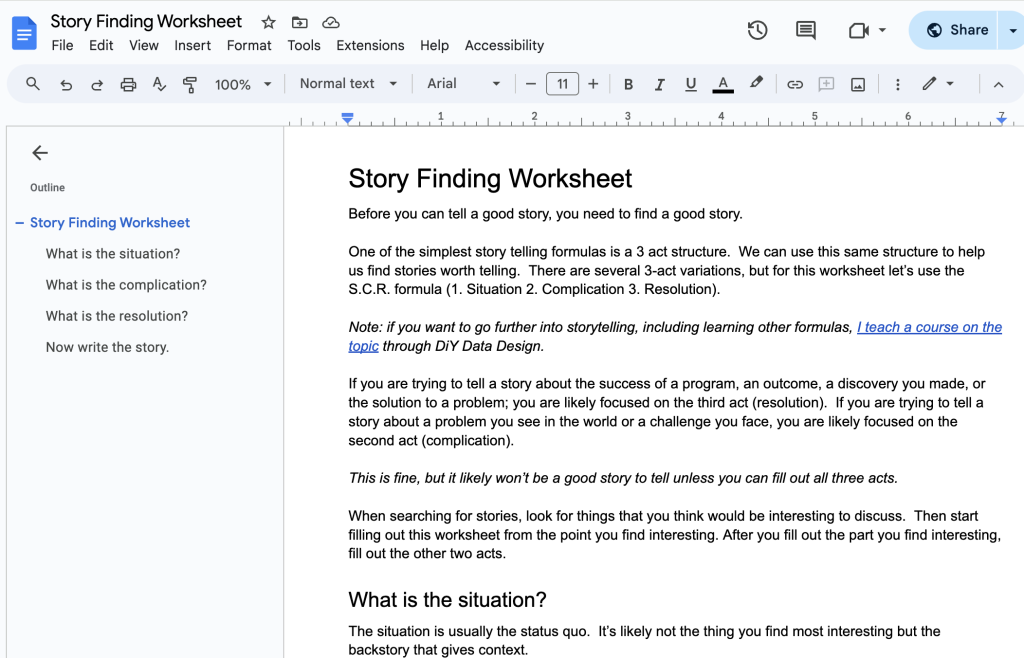This is an Eval Central archive copy, find the original at freshspectrum.com.
So this question came up from a participant during my data storytelling workshop.
The question was something like, “How do you train others on your team to find, and then tell, stories?“
During the prior session, we had gone through a series of storytelling frameworks. We practiced developing and telling stories using each one. One of the cool things about that is that most people can pretty quickly take to a formula, so we ended up with some nice little stories that made great examples.
Another bonus is that we can also take that formula and turn into a creative process that can be shared with others on our team. And the easiest way to do that is to turn the formula into a kind of story rubric, or for simplicity sake, we’ll just call it a story finding worksheet.

The S.C.R. formula.
One of my favorite storytelling formulas is the SCR, which you often find on the web attributed to McKinsey. It’s a simple three act structure that replaces the beginning, the middle, and the end with three words, Situation, Complication, and Resolution.
The structure is really simple and you can use it to develop stories for anything from case studies and little infographics to keynote presentations and YouTube videos.
A common reporting problem for a lot of researchers and evaluators, and one of the biggest reasons to use a formula, is that they tend to skip right to situation. By the end of most data projects we are pretty hyper focused on either outcomes (resolution) or continued challenges (complication). If this were a joke it would be like delivering the punchline without the setup.
You need all three acts to tell a good story. And by creating a worksheet that makes you think through each act separately, we’re more likely to not skip a step.
My Story Finding Worksheet.
I went ahead and turned the S.C.R. formula into a story finding worksheet. The worksheet itself is in Google Docs and just two pages.
If you’re interested, you can get the worksheet link here.
